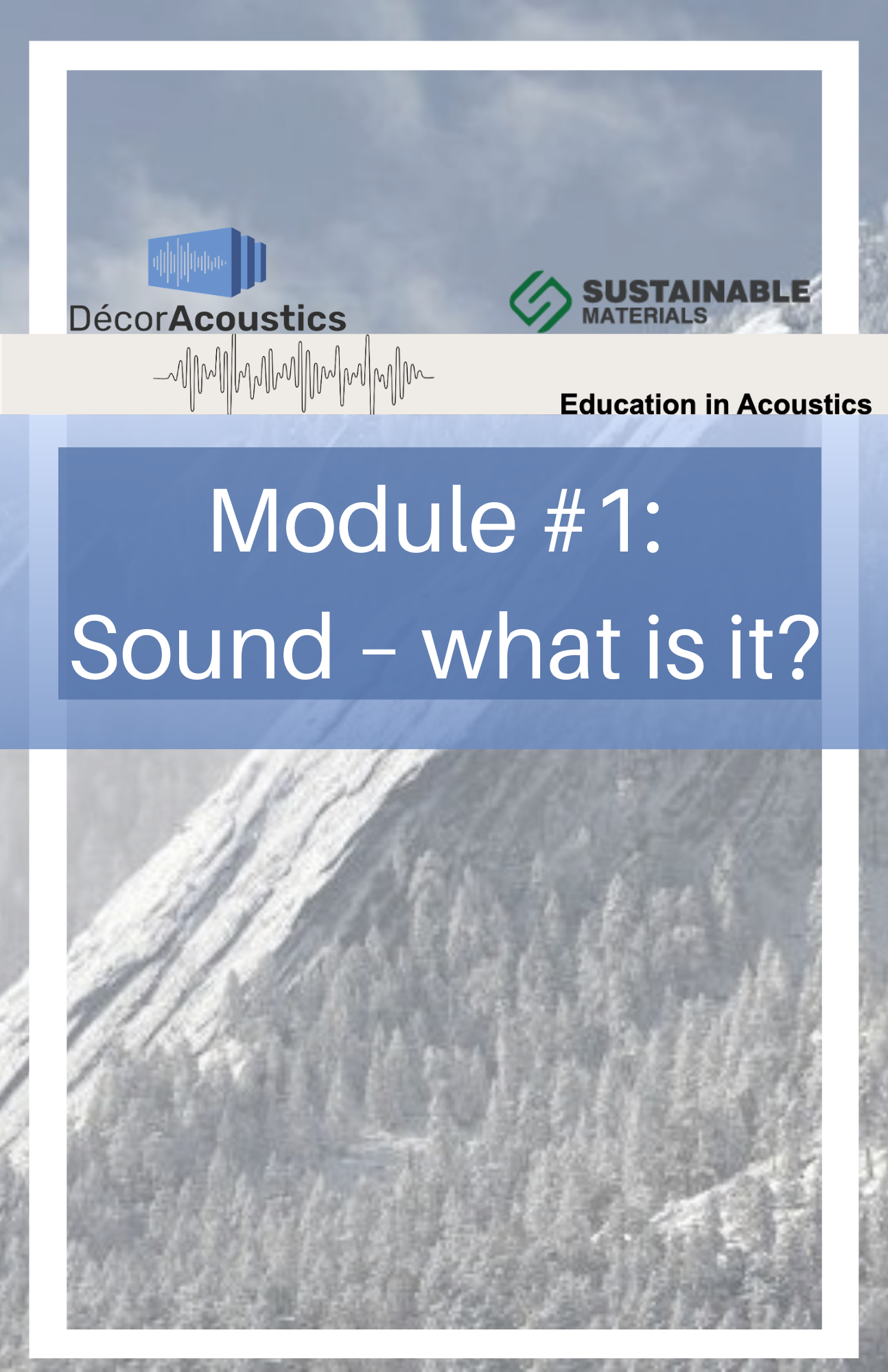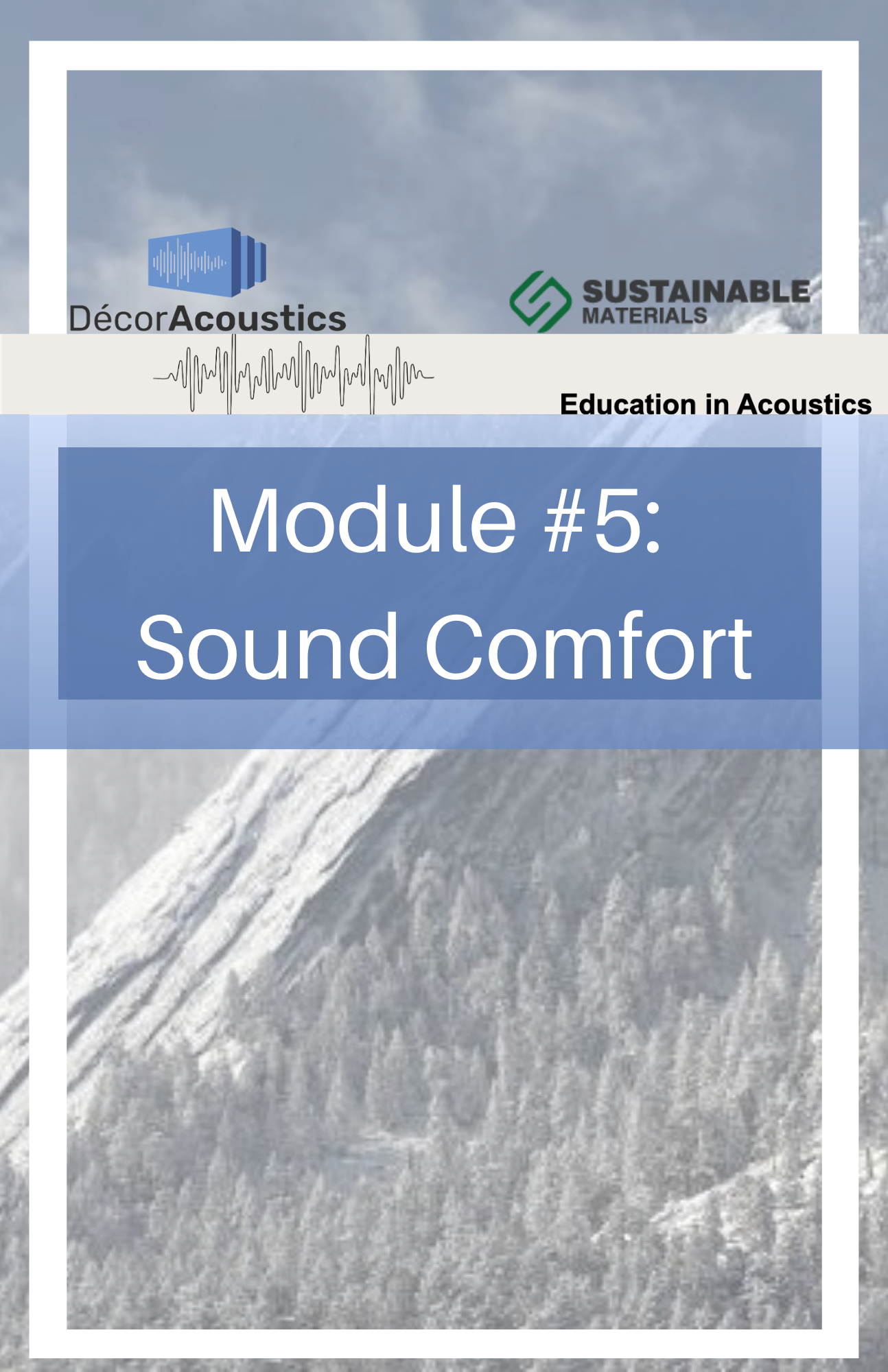Acoustic Modules (Series: Education in Acoustics)
#1- Sound- What is it?
In this first module, we will address the question of Sound – what it is, and how it affects comfort. Sound is one of the 5 senses (in addition to touch, sight, smell and feel). Sound is caused by a molecular chain-reaction, where there is a source that emits vibrations in the air which then stimulate air molecules to move.
#2- Wavelength
Sound is measured in units of Decibels (dB), with the measurement being based on the relative pressure of a sound wave compared to a reference pressure, typically the threshold of human hearing. The decibel scale is logarithmic, so a small increase in decibels represents a large increase in sound pressure.
#3- What is NRC?
The term ‘NRC” is an acronym for Noise Reduction Coefficient, which is a numerical rating that represents the average of a materials’ sound absorption coefficients within a certain of audible frequencies (namely: 250Hz – 2000Hz). The rating is designed to simplify and help analyze how materials and/or products absorb these mid-frequency sound waves.
#4- The dB Sweet Spot
When it comes to assessing the noise levels in different types of spaces, decibel level guidelines are often used as a standard for determining acceptable noise levels. Decibel level guidelines can help ensure that the sound in a space is comfortable and safe for occupants, while also minimizing the risk of noise-induced hearing loss or other health problems.
#5- Sound Comfort
As we learned in Module #3, ideal sound levels vary based upon the type of space, and what type of activities are being done within the space. And, though there are no federally mandated guidelines for space acoustics, ideal ranges of decibel levels have been developed through testing and analysis.
#6- Sound from the outdoors
In the last module, we thoroughly analyzed indoor acoustic challenges, and solution options designed to mitigate noisy spaces, with the goal being to achieve sound comfort. Here we will address sound issues where sound originates from the outdoors.
#7- Sound in Offices
Acoustic comfort plays a crucial role in the overall well-being and productivity of employees in office environments. When we look at the challenges within an office space, they can typically be divided into several different types:
#8- Sound in Restaurants
When it comes to dining out, the ambiance of a restaurant plays a major role in the overall experience. From the lighting and decor to the menu and service, every aspect is carefully considered to create the perfect atmosphere for customers. However, one aspect that is often overlooked is the acoustics.
#9- Sound in Schools
Acoustic comfort plays a crucial role in the learning environment of students in school. Much like in the Office environments we looked at in Module #6, noise level, reverberation, and speech intelligibility in a classroom can have a significant impact on how well students learn and retain information.
#10- Sound in Hotels
Sound levels can greatly affect the quality of a hotel guest’s stay. Ideally, hotel rooms should provide a peaceful and comfortable environment for guests to relax and sleep. However, excessive noise levels can disrupt this experience and result in complaints and negative reviews.










